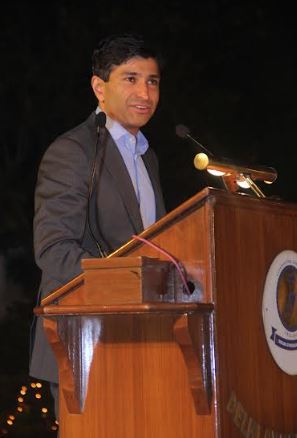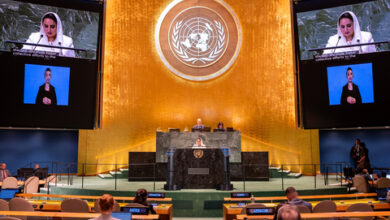Decarbonization is Mission Critical Now: Ratul Puri

The need for Renewable & Green energy is now mission critical. Since 1970, CO2 emissions have increased by about 90%, with emissions from fossil fuel combustion and industrial processes contributing about 78% of the total greenhouse gas emissions increase from 1970 to 2011.
 |
Ratul Puri is the Group Chairman of Hindustan Powerprojects Group
Mr. Ratul Puri, Group Chairman, Hindustan Powerprojects said, “As per the Energy Information Administration (EIA) projections, there is going to be a nearly 50% increase in global energy use by 2050. As economic activity restarted after the Covid lockdowns, there were reports of rising energy costs and tight supplies from all parts of the globe. Global summits talk about commitments from all nations on net-zero emissions and carbon neutrality. And yet, fossil fuels like coal, oil and natural gas supply 80% of the world’s energy used. Large parts of the developing world rely on that. That is why global energy debates have the potential to threaten social cohesion.At the Paris summit on climate change in 2015, world leaders agreed to contain global warming to 2 degrees Celsius, and strive to bring Earth’s average temperature to 1.5 degrees Celsius, below the pre-industrial levels. Renewable energy is going to be an important source for power generation in the near future, and the most logical way to open our paths to carbon neutrality.”
India is meeting global commitments, including living up to its climate mitigation promises. We are well ahead of targets in achieving ambitious commitments such as making renewables 40 percent of the energy mix by 2030 and managing the sequestration of 2.5 billion tonnes of carbon. To cap global warming at 1.5 degrees Celsius, policy should take the long view, expand access to digital connectivity and invest in green infrastructure.
Mr. Puri further said, “The energy challenge is three-fold. First, we need reliable and clean energy to meet our consumption requirements. Second, we need to transition to green energy sources to decrease the burden of global warming. Third, we need to increase the reliability and resiliency of the grid network. However, the move to clean energy is not all that simple.”
Unabated coal use fuelled the industrialization of the now developed nations, and enabled their path to prosperity. If the world needs to be net-zero by 2050, as per the Intergovernmental Panel on Climate Change (IPCC), all countries need to take on emission reduction targets. Carbon levies may kick in next. Already, sustainability reporting norms from the Securities and Exchange Board of India (SEBI) mandate an environmental, social and governance overview. The energy transition is one of the most complex issues humanity is facing in contemporary times.
India set up the Ministry of Non-conventional Energy Sources in 1992 and renamed it Ministry of New and Renewable Energy (MNRE) in 2006, laying the foundation for renewable energy growth. Prime Minister Narendra Modi resolves to see India emerge as a leader in the renewable energy space. He has set an ambitious target of achieving 450GW of renewable energy capacity by 2030.
“In the past 10 years, renewables have seen rapid growth in our energy ecosystem. Estimates suggest India has over 1050GW of renewable potential in wind and solar power energy. Green energy sources, like solar and wind, offer intermittent benefits, given their reliance on sunlight and high-speed winds. This makes energy storage vital to building green capacities,” Mr.Puri added.
Europe generates 30% of its power by renewables, out of which 13% is by wind. In India, hydro contributes to 11% of the total energy produced, followed by wind and solar. In the past eight years, Rs. 5.2 trillion has been invested in renewable energy. Policy interventions, like transparent bidding, waiving of inter-state transmission system charges, and so on, have helped India play a leading role in the clean energy ecosystem. India helped set up the International Solar Alliance in 2015, to promote solar energy in 121 tropical countries.
Additionally, waste-to-energy projects offer twin benefits of making India clean and green. We need to have more such projects, encourage green mobility, and production of hydrogen. Technology can help bring down the price of renewable energy and become a gamechanger in the climate change battle. Digitalized energy systems with advanced situational intelligence can identify who needs energy and when and deliver it at the lowest cost. Despite the pandemic, steady growth helped us cross the 100GW target of installed capacity of renewable energy in 2021.
“The decarbonization move includes curtailing diesel intake, encouraging green grids, low-power digital designs, better efficiencies, better water treatment facilities, and so on. Our climate and energy strategies must be on a continual innovation and speed cycle. Huge opportunity exists in reimagining the energy sector,” Mr. Puri concluded.
![]() This feed is automatically published via newsvoir.com
This feed is automatically published via newsvoir.com


